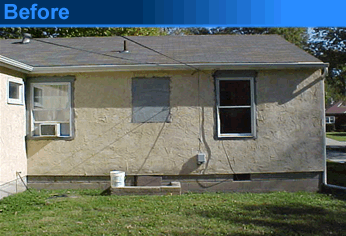 |
|
 |
 |
 |
 |
 |
 |
 |
 |
|
|
Stucco Repair |
|
|
 |
 |
|
|
While stucco is a durable siding material requiring minimal upkeep, it’s not unusual for cracks to appear at some point in your home’s lifecycle. Damage can range from hairline cracks to unsightly cracks, blemishes, and holes. In some cases, the damage is due to external conditions; in others, an accident or construction project requires stucco repairs.
Causes of Stucco Damage
Stress Cracks - As a hard surface, stucco bears a great deal of stress as the home settles and during hot-cold expansion periods. When settling or expansion and contractions are severe enough, the stucco cracks.
Accidents – Believe it or not, it’s not that uncommon for a car to strike a house, damaging the stucco as a result.
Construction and Remodeling – Stucco repair is common during and after remodeling. For example, when installing a new window, unless the new window is the same size as the old one, a hole will need to be cut or additional wall and siding materials applied to fill smaller openings. In either case, the stucco surrounding the window will need to be repaired and finished. Similarly, if you’re adding a room addition, the new room will need siding to match the rest of the house.
Water Intrusion – If water gets behind the stucco, it will slowly cause stucco damage from the inside out. You may notice blemishes, peeling, or blisters in the stucco. How does water get between stucco? Roof leaks, gutter overflows, poorly placed sprinklers, pipe leaks and breaks, and flooding are among the common causes of water intrusion affecting neighborhoods in Houston.
Stucco repair has its challenges and requires an expert craftsman experienced in color and texture matching. Not only must the color and texture match the surrounding stucco, the materials used must have similar characteristics to the original stucco materials.
|
|
|
|
|
|
 |
|
|
|
|
|
|
|
|
|
|
|
|
|
|
|